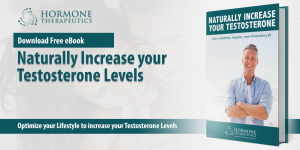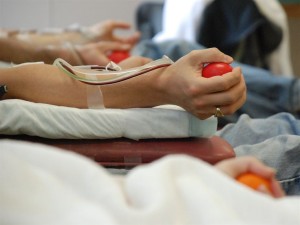When we talk about testosterone myths, this topic has its share of a bad rap as the “aggression” hormone that’s somehow the “root cause” of at least the majority of male-dominated social violence. While the absolutely invaluable evolutionary necessity of testosterone, along with its many evident positive effects, is indeed a primarily male-driven hormone that affects men in many of the ways we’ve previously discussed, it’s completely backwards logic to “blame” testosterone for the complex problem of societal violence (or the lack thereof for any absence of same).
In the US, we have also been raised to view “Steroids” through the lens of sports abuse and cheaters watching East German Olympians in the 80s and 90s, issues with Pro Wrestlers and sad stories from steroid abusers like Lyle Alzado. Steroids have certainly seemed like a very unhealthy lifestyle choice.
Things are different today as physicians and scientists have a much better understanding of the benefits of living with a fully functioning endocrine system. 100 years ago the average life span was 48 and today it is 78 years. Many areas of the body do not hold up over time as well as others and require assistance like eye glasses, hearing aids or Lipitor. The same is true with balancing and optimizing the endocrine system. We now understand that a properly balanced endocrine system leads to lower incidence of prostate cancer, stroke, heart attack and mortality.
<h2>Busted Testosterone Myths</h2>
So let’s take a clear-eyed look at a few of the testosterone myths that are at best based on specious reasoning and at worst, they’re almost completely devoid of scientific examination and study:
<h3>Testosterone Myths #1: Testosterone Increases Lead to Prostate Cancer</h3>
This proverbial “old wives tale” began with a single study all the way back in 1941 that has since been roundly and soundly disproved many times over (multiple studies). We now know that men with normal testosterone levels have a lower incidence of prostate cancer than men with low levels. We also know that men supplemented from low testosterone levels to normal testosterone levels also have lower incidence of prostate cancer. If you are already undergoing treatment for a prostate condition, it’s always best to consult with your physician and inadvisable unless specifically guided to do so.
<h3>Testosterone Myths #2: Increased Testosterone Leads to Violent Behavior</h3>
There is absolutely no empirical scientific evidence whatsoever to suggest that an all-natural increase in your testosterone level will lead to any violent or anti-social behavior. In fact, recent studies have shown that healthy social assimilation in all males is strongly linked to higher levels of testosterone, in comparison with males with lower levels. Of course random acts of violence committed by males addicted to anabolic steroids (commonly referred to as “roid rage”) has contributed to the complete fallacy that a natural increase in testosterone is somehow connected to this unfortunately all too common side-effect of steroid drug abuse. To be perfectly clear-
An all-natural increase in testosterone will have no negative effect regarding violent behavior and will almost certainly lead to a much greater possibility of pro-social behavior and positive social success in all males.
<h3>Testosterone Myths #3: Any Testosterone Increase Will Create Personal Social Conflict</h3>
Much like the previous example, this myth simply does not stand up under scrutiny. To the contrary, numerous scientific studies have shown that due to the measurable decrease in both concentration and libido associated with low levels of testosterone, men suffering from this condition are much more inclined to become socially frustrated and, as a result, are much more susceptible to bouts of clinical depression and accompanying depressive, anti-social behaviors.
A properly high level of testosterone, on the other hand, leads to much more properly adjusted mood management and an overall more satisfied, successful and social male!
<h3>Testosterone Myths #4: Testosterone Treatment increases Cardiovascular Risk</h3>
A Swedish study tested the hypothesis that serum total testosterone and sex hormone-binding globulin (SHBG) levels predict cardiovascular events in elderly men. The study found that supplementing, and maintaining, testosterone reduces cardiovascular risks when the levels were maintained above 550ng/dl. The study also found negative correlation between testosterone levels are type 2 diabetes risk.
5 Busted Myths about Testosterone Treatment
19 April,2023
sa_admin
sa_admin
April 19th, 2023
Posted In: Uncategorized
Tags: aggression, anti-social, cardiovascular, death, depression, heart attack, prostate cancer, steroids, stroke, testosterone, testosterone myths, testosterone therapy, testosterone treatment, unhealthy, violence, violent
Leave a Comment
 When we talk about testosterone myths, this topic has its share of a bad rap as the “aggression” hormone that’s somehow the “root cause” of at least the majority of male-dominated social violence. While the absolutely invaluable evolutionary necessity of testosterone, along with its many evident positive effects, is indeed a primarily male-driven hormone that affects men in many of the ways we’ve previously discussed, it’s completely backwards logic to “blame” testosterone for the complex problem of societal violence (or the lack thereof for any absence of same).
When we talk about testosterone myths, this topic has its share of a bad rap as the “aggression” hormone that’s somehow the “root cause” of at least the majority of male-dominated social violence. While the absolutely invaluable evolutionary necessity of testosterone, along with its many evident positive effects, is indeed a primarily male-driven hormone that affects men in many of the ways we’ve previously discussed, it’s completely backwards logic to “blame” testosterone for the complex problem of societal violence (or the lack thereof for any absence of same).
In the US, we have also been raised to view “Steroids” through the lens of sports abuse and cheaters watching East German Olympians in the 80s and 90s, issues with Pro Wrestlers and sad stories from steroid abusers like Lyle Alzado. Steroids have certainly seemed like a very unhealthy lifestyle choice.
Things are different today as physicians and scientists have a much better understanding of the benefits of living with a fully functioning endocrine system. 100 years ago the average life span was 48 and today it is 78 years. Many areas of the body do not hold up over time as well as others and require assistance like eye glasses, hearing aids or Lipitor. The same is true with balancing and optimizing the endocrine system. We now understand that a properly balanced endocrine system leads to lower incidence of prostate cancer, stroke, heart attack and mortality.
Busted Testosterone Myths
So let’s take a clear-eyed look at a few of the testosterone myths that are at best based on specious reasoning and at worst, they’re almost completely devoid of scientific examination and study:
 Testosterone Myths #1: Testosterone Increases Lead to Prostate Cancer
Testosterone Myths #1: Testosterone Increases Lead to Prostate Cancer
This proverbial “old wives tale” began with a single study all the way back in 1941 that has since been roundly and soundly disproved many times over (multiple studies). We now know that men with normal testosterone levels have a lower incidence of prostate cancer than men with low levels. We also know that men supplemented from low testosterone levels to normal testosterone levels also have lower incidence of prostate cancer. If you are already undergoing treatment for a prostate condition, it’s always best to consult with your physician and inadvisable unless specifically guided to do so.
 Testosterone Myths #2: Increased Testosterone Leads to Violent Behavior
Testosterone Myths #2: Increased Testosterone Leads to Violent Behavior
There is absolutely no empirical scientific evidence whatsoever to suggest that an all-natural increase in your testosterone level will lead to any violent or anti-social behavior. In fact, recent studies have shown that healthy social assimilation in all males is strongly linked to higher levels of testosterone, in comparison with males with lower levels. Of course random acts of violence committed by males addicted to anabolic steroids (commonly referred to as “roid rage”) has contributed to the complete fallacy that a natural increase in testosterone is somehow connected to this unfortunately all too common side-effect of steroid drug abuse. To be perfectly clear- An all-natural increase in testosterone will have no negative effect regarding violent behavior and will almost certainly lead to a much greater possibility of pro-social behavior and positive social success in all males.
 Testosterone Myths #3: Any Testosterone Increase Will Create Personal Social Conflict
Testosterone Myths #3: Any Testosterone Increase Will Create Personal Social Conflict
Much like the previous example, this myth simply does not stand up under scrutiny. To the contrary, numerous scientific studies have shown that due to the measurable decrease in both concentration and libido associated with low levels of testosterone, men suffering from this condition are much more inclined to become socially frustrated and, as a result, are much more susceptible to bouts of clinical depression and accompanying depressive, anti-social behaviors.
A properly high level of testosterone, on the other hand, leads to much more properly adjusted mood management and an overall more satisfied, successful and social male!
 Testosterone Myths #4: Testosterone Treatment increases Cardiovascular Risk
Testosterone Myths #4: Testosterone Treatment increases Cardiovascular Risk
A Swedish study tested the hypothesis that serum total testosterone and sex hormone-binding globulin (SHBG) levels predict cardiovascular events in elderly men. The study found that supplementing, and maintaining, testosterone reduces cardiovascular risks when the levels were maintained above 550ng/dl. The study also found negative correlation between testosterone levels are type 2 diabetes risk.
Hormone Therapeutics aims to help people looking to improve and optimize their health through natural means or through the guidance of our physicians.
Don’t miss out our free weekly tips and news on Low T, hormone balancing, healthy living, nutrition and a lot more.
Want more?

Sign up today and Get our ebook, ‘Naturally Increase Your Testosterone Levels’ absolutely FREE.
4 Popular Testosterone Myths Revealed
14 October,2016
Saleamp Design
Saleamp Design
October 14th, 2016
Posted In: Low T Info
Tags: aggression, anti-social, cardiovascular, death, depression, heart attack, prostate cancer, steroids, stroke, testosterone, testosterone myths, testosterone therapy, testosterone treatment, unhealthy, violence, violent
Leave a Comment
 Therapeutic phlebotomy, colloquially known as bloodletting and used to manage red blood cell counts and Hematocrit levels, has a very long history in medical practice. The technique has been used for hundreds if not thousands of years across the globe.
Therapeutic phlebotomy, colloquially known as bloodletting and used to manage red blood cell counts and Hematocrit levels, has a very long history in medical practice. The technique has been used for hundreds if not thousands of years across the globe.
The original logic behind bloodletting is simple but flawed. If disease lives within the blood, then removing the blood must also remove the disease. Of course, today we know that disease isn’t quite that simple. Modern medical practice discarded the technique as ineffective and dangerous.
Recent evidence, though, has brought therapeutic phlebotomy back in very specific cases. There are some medical conditions which can be treated or managed by the controlled removal of red blood cells and iron from the body, and the technique has found new life among today’s doctors.
Treatment of Polycythemia through Bloodletting
One such condition that responds to therapeutic phlebotomy is polycythemia. The word literally translates to “many blood”, and refers to an overproduction of red blood cells in the body. People suffering from polycythemia have blood that is thick, viscous, or “sticky”, and the condition can be fatal. Blood in this state is more difficult for the heart to handle, potentially leading to high blood pressure, heart attack, or stroke.
The disorder can be brought on by a number of factors.
Potential Causes of Polycythemia
- Stress
- Medications
- Heavy smoking
- Overabundance of testosterone
- Dehydration
- Obesity
- Altitude
Testosterone and High Red Blood Cell Count – Polycythemia
The rise of testosterone replacement therapy has led to an increased instance of polycythemia. Testosterone treatments are wonderfully effective in a variety of cases, but like any medical treatment, it must be administered with care by a medical professional.
Testosterone, as well as assisting with mood support, building physical capability, and its other positive effects, stimulates the body to produce more red blood cells. Increased blood production is beneficial in some cases, such as in anemic patients, but can result in polycythemia if not carefully monitored.
Men are more prone to developing the condition, as they are usually prescribed much higher doses of testosterone than women.
Generally, the doctor administering testosterone therapy will manage the treatment to minimize the risk of side effects such as polycythemia. If red blood cell counts creep up too high, the excess blood can be drained away using the old technique of therapeutic phlebotomy, or bloodletting.
Removing a single pint of blood is usually enough to bring red blood cell counts back to normal. The blood can also be donated to a blood bank, if the patient’s blood is eligible.
Repeated bloodletting sessions are indicated in some cases if polycythemia recurs.
The effects of therapeutic phlebotomy are immediate, since they involve the physical removal of blood from the body. Symptoms such as high blood pressure subside instantly, and most patients report feeling better right away.
Testosterone and Hematocrit levels
Due to the instance of polycythemia in patients receiving testosterone replacement therapy, regular follow-up testing is extremely important even after the treatments are complete. Among other measurements, doctors will measure the Hematocrit and Hemoglobin in patients who have received testosterone treatments.
This measures the quantity of red blood cells in the body, or hematocrit, a component of the blood. When this is too high, the blood becomes thicker or more viscus and if not managed properly could put more strain on the body. Ensuring blood cell count and hematocrit levels remain within the normal range is important to anyone’s health, but especially so for recipients of testosterone therapy.
Medications are often used for long-term management of hematocrit levels, as well as therapeutic phlebotomy sessions if hematocrit rises too high.
Other Benefits of Therapeutic Phlebotomy
As well as effectively managing polycythemia, bloodletting is sometimes used as a treatment for hypertension, or high blood pressure. Removing a pint of blood has been shown to decrease blood pressure and “bad” cholesterol levels, during a study performed at Immanuel Hospital in Berlin.
The inspiration for the study was the finding that regular blood donors had a reduced instance of high cholesterol, as well as reduced risk of coronary disease and stroke.
The idea that removing blood from the body would reduce blood pressure seems obvious in retrospect. The technique is an ancient one, but still has merit today under controlled circumstances.
Different studies have also shown that therapeutic phlebotomy can aid diabetics in controlling blood sugar levels.
Finally, most patients report increased energy levels and feelings of health after bloodletting. Although this is not necessarily a reason to receive the treatment in and of itself, patients and doctors alike often consider it a nice bonus.
Do You Need Help?
Hormone Therapeutics is the leading national company assisting men who want to get their lives back through Hormone Replacement and Testosterone Replacement therapy. Our local physicians are ready to treat you anywhere in the entire country. Hormone Therapeutics is pioneering an easier, cost efficient and more private way for you to work with our clinical advisors and physicians from the privacy of your home or office after your local physical exam confirms you have one of the symptoms of Low T.
Contact us today and our clinical seo advisors will work with you on a hormone therapy program that may include prescribed hormones, exercise, nutrition and sleep programs to reclaim your vitality.
Here’s How Bloodletting Help Manage Polycythemia and Hematocrit levels Caused by Testosterone Replacement
15 April,2016
Saleamp Design
Saleamp Design
April 15th, 2016
Posted In: Testosterone Therapy
Tags: bloodletting, hematocrit, hemoglobin, low t, low testosterone, phlebotomy, polycythemia, red blood cell count, testosterone therapy, testosterone treatment
Leave a Comment
 Therapeutic phlebotomy, colloquially known as bloodletting and used to manage red blood cell counts and Hematocrit levels, has a very long history in medical practice. The technique has been used for hundreds if not thousands of years across the globe.
Therapeutic phlebotomy, colloquially known as bloodletting and used to manage red blood cell counts and Hematocrit levels, has a very long history in medical practice. The technique has been used for hundreds if not thousands of years across the globe.

 When we talk about testosterone myths, this topic has its share of a bad rap as the “aggression” hormone that’s somehow the “root cause” of at least the majority of male-dominated social violence. While the absolutely invaluable evolutionary necessity of testosterone, along with its many evident positive effects, is indeed a primarily male-driven hormone that affects men in many of the ways we’ve previously discussed, it’s completely backwards logic to “blame” testosterone for the complex problem of societal violence (or the lack thereof for any absence of same).
When we talk about testosterone myths, this topic has its share of a bad rap as the “aggression” hormone that’s somehow the “root cause” of at least the majority of male-dominated social violence. While the absolutely invaluable evolutionary necessity of testosterone, along with its many evident positive effects, is indeed a primarily male-driven hormone that affects men in many of the ways we’ve previously discussed, it’s completely backwards logic to “blame” testosterone for the complex problem of societal violence (or the lack thereof for any absence of same). Testosterone Myths #1: Testosterone Increases Lead to Prostate Cancer
Testosterone Myths #1: Testosterone Increases Lead to Prostate Cancer Testosterone Myths #2: Increased Testosterone Leads to Violent Behavior
Testosterone Myths #2: Increased Testosterone Leads to Violent Behavior Testosterone Myths #3: Any Testosterone Increase Will Create Personal Social Conflict
Testosterone Myths #3: Any Testosterone Increase Will Create Personal Social Conflict Testosterone Myths #4: Testosterone Treatment increases Cardiovascular Risk
Testosterone Myths #4: Testosterone Treatment increases Cardiovascular Risk
